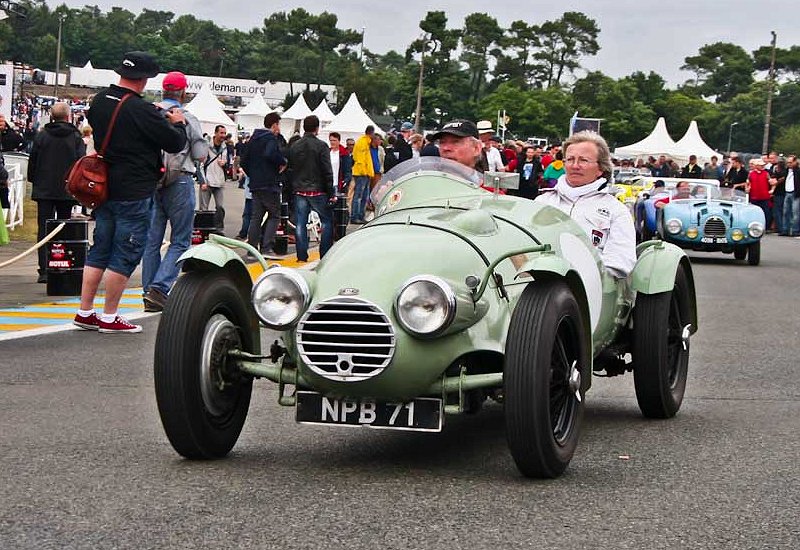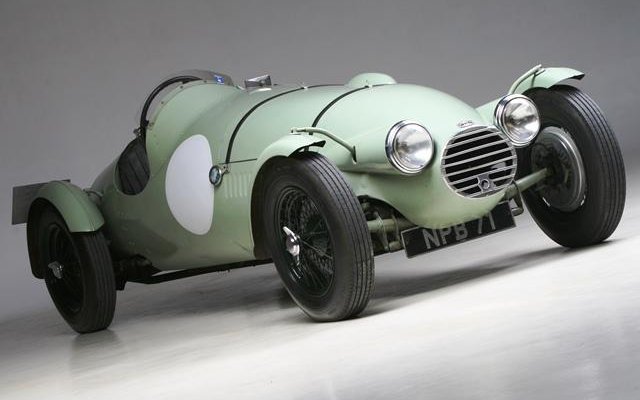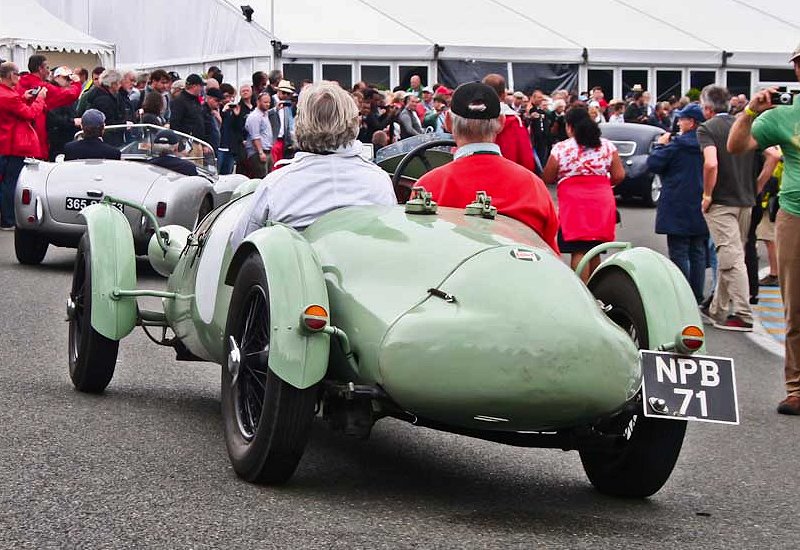Description
The HRG 1500 Le Mans Lightweight was the most focused and competition-oriented version of HRG’s finely balanced 1.5-litre sports car. Built in 1949 specifically for endurance racing, it was a purpose-designed machine that distilled the company’s engineering philosophy—light weight, simplicity, and mechanical purity—into a true racing car. It marked the pinnacle of HRG’s modest but proud motorsport achievements and embodied the spirit of post-war British privateer racing at its most authentic.
The Le Mans Lightweight evolved directly from the HRG 1500 Aerodynamic, which had already proved itself both fast and reliable. For 1949, HRG decided to enter the 24 Hours of Le Mans officially, fielding a specially prepared version of its 1500 model with further weight reduction and improved aerodynamics. The result was a car that weighed barely 600 kilograms—some 50 kg lighter than the standard 1500—and had refined bodywork that combined the sleek, streamlined form of the Aerodynamic with racing-specific modifications for durability and serviceability during the gruelling 24-hour event.
Under the bonnet lay the familiar Singer-derived 1,497 cc overhead-camshaft four-cylinder engine, extensively tuned by HRG’s engineers. Fitted with twin SU carburettors, a high-compression cylinder head, and a free-flowing exhaust, it developed around 75 horsepower. That may sound modest, but in such a light chassis it gave brisk performance and an exceptional power-to-weight ratio. A close-ratio four-speed gearbox transmitted power to the rear wheels, and the car’s gearing and low frontal area allowed a top speed of about 100 mph (160 km/h)—an impressive figure for a 1.5-litre car in 1949.
The chassis remained the same proven tubular ladder-type steel frame used in HRG’s road cars, but it was stripped of all unnecessary weight and fitted with revised suspension tuning. Independent front suspension with a transverse leaf spring and a live rear axle on semi-elliptic leaf springs gave the car its characteristically balanced handling. Hydraulic drum brakes provided dependable stopping power, and large cooling ducts were added for the long race. The steering was light and precise, offering the tactile feedback that made HRG cars so beloved among experienced drivers.
The bodywork of the Le Mans Lightweight was a masterpiece of minimalist design. Built in aluminium by Fox & Nicholl, it featured a low, rounded nose with faired-in headlamps, a curved windscreen, and a tapered tail to reduce drag. The cockpit was tiny, accommodating two drivers side by side, and the seating position was low to improve the car’s center of gravity. Every panel was hand-formed, and the overall finish, though spartan, reflected the care of a small team of craftsmen dedicated to performance above all else.
At the 1949 24 Hours of Le Mans, the HRG 1500 Le Mans Lightweight, driven by Eric Thompson and Jack Scott, delivered a remarkable performance. Competing against larger and more powerful cars from Delahaye, Aston Martin, and Ferrari, the little HRG ran faultlessly throughout the race. It finished eighth overall and first in the 1.5-litre class—an extraordinary achievement for a company with only a handful of employees and limited resources. This result instantly established HRG’s reputation internationally and remains one of the marque’s proudest moments.
Following Le Mans, a handful of Lightweight cars were produced for private owners and racers, though total production is believed to have been no more than two or three examples. Each was built to individual order, sharing the same lightweight structure and aerodynamic bodywork as the works car. Some were used successfully in British hill climbs and sports car races, continuing HRG’s tradition of reliability and competitive spirit.
Inside, the car reflected its pure racing purpose. The cockpit contained only the essentials: a small set of Smiths instruments, an alloy steering wheel, and drilled pedals to save weight. There was no trim, no weather protection, and no concessions to comfort—just bare aluminium panels and exposed mechanical components. Every control had a precise, mechanical feel, allowing the driver to sense exactly what the car was doing at all times.
On the road or circuit, the Le Mans Lightweight was a revelation. Its lightness, low drag, and nimble chassis gave it superb balance and handling. The car could be driven flat out for hours with remarkable composure, and its simple mechanical layout made it easy to maintain and repair. It was the embodiment of HRG’s design philosophy: performance achieved through efficiency and balance rather than brute force.
Today, the HRG 1500 Le Mans Lightweight is regarded as the most significant and collectible HRG ever built. Surviving examples—especially those with documented Le Mans history—are revered by collectors and historians as symbols of the ingenuity and determination of small British sports car makers in the post-war era. The car’s 1949 Le Mans success stands as one of the greatest achievements by a truly independent manufacturer, proving that with sound engineering, light weight, and reliability, even a small team could compete with giants.
The HRG 1500 Le Mans Lightweight remains one of the purest expressions of 1940s British racing design—compact, elegant, and technically brilliant. It captures the essence of HRG’s philosophy: that the true art of motoring lies not in excess, but in balance, precision, and the unfiltered joy of driving.


